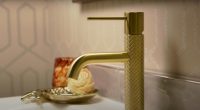Vinyl Flooring: Sustainable and Long-Lasting Home Improvement
When you’re designing your dream home, you want every detail to be perfect and seamlessly stitched together to present who you truly are. But before picking out aesthetically pleasing furniture or art, you should build a solid foundation on which your home stands. And that starts with choosing the right flooring that will last you a long time.
Vinyl flooring has swept the world by storm with its practicality, durability and affordable prices. So what exactly is this type of floor and how can it help improve your home?
Floor vinyl is a type of artificial material, usually made out of synthetic fibres such as PVC or fibreglass, made with multiple layers that provide a sturdy and comfortable surface with up to 35 years of durability. Since the sudden rise in the popularity of vinyl flooring, the industry has designed multiple types and styles to accommodate every taste and need. The vinyl flooring found on the market today is made more solid than the previous models, and unlike its laminate counterpart, it withstands more foot traffic.
Why Choose Vinyl Flooring?
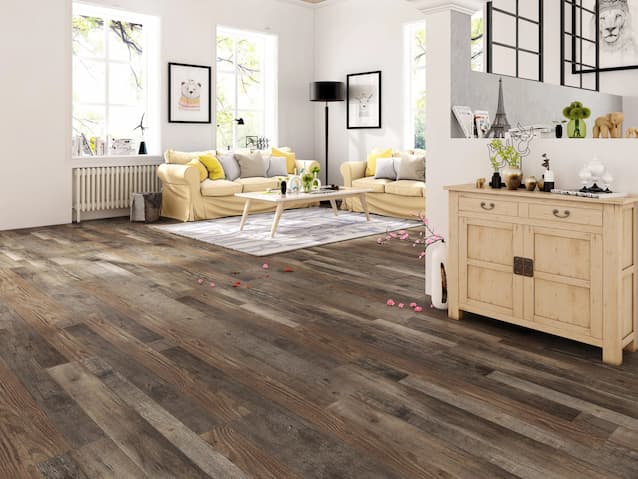
As you’re on the market for new flooring, the most crucial information to know is the location of placement. Almost all hardwood floors cannot be exposed to water or moisture, but floor vinyl is completely waterproof therefore making it perfect for installing in your kitchen or bathroom. In addition to being waterproof, they are also stain resistant which results in easy clean-up of spillage.
When it comes to durability, vinyl flooring has proven over and over again to endure heavy foot traffic. So if you’re a family with kids and pets, this type of flooring might just be your ideal choice. You can reinforce your children’s room or the living area, and let your little ones run free without worrying about damage.
Another appealing factor to consider is the cost of the flooring. Since it’s cheaper than hardwood or ceramic options, vinyl floors are a great alternative if you need stylish yet practical flooring.
Best of all, vinyl flooring is extra comfortable to walk on, especially in chillier months, as it comes with extra padding making it feel warm and soft to the touch.
The Different Types of Floor Vinyl
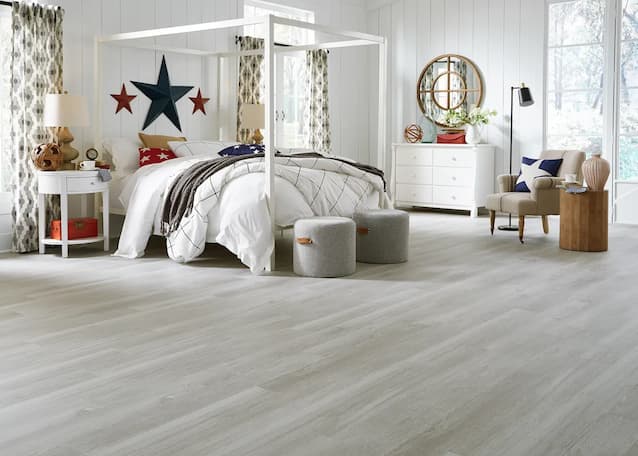
Although there are a plethora of floor vinyl styles, when talking about types it’s usually referred to the method of installing the flooring. In this case, there are two types: vinyl sheet flooring and vinyl panel flooring. Now this may seem slightly confusing, so let’s break down both types:
Vinyl Sheet Flooring
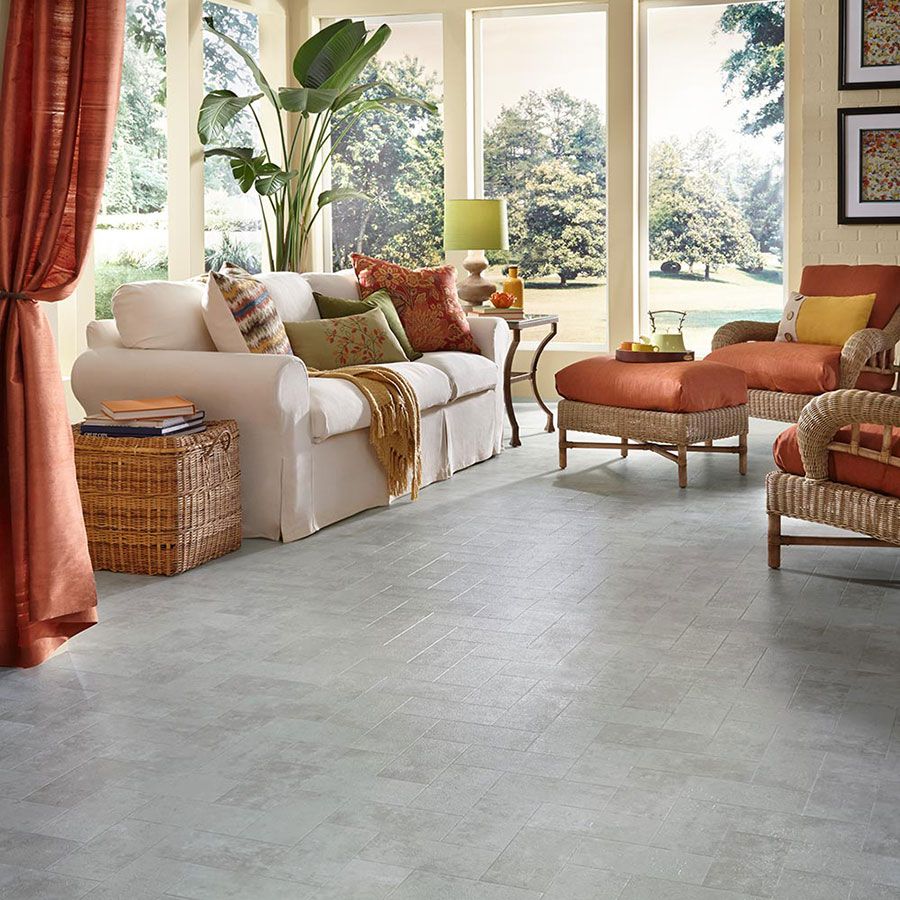
Sheet flooring is a large, flexible sheet of vinyl that can be glued down or loosely secured to fit your needs. This type of vinyl is compromised of multiple layers and is fairly cheaper than its tile counterpart. The downside of this option is that the whole sheet has to be made in one design and if it gets damaged, you’d have to tear the whole flooring and replace it. Combining two or more designs would mean cutting up parts and fitting them together, thus compromising the durability of the flooring.
Vinyl Tile Flooring
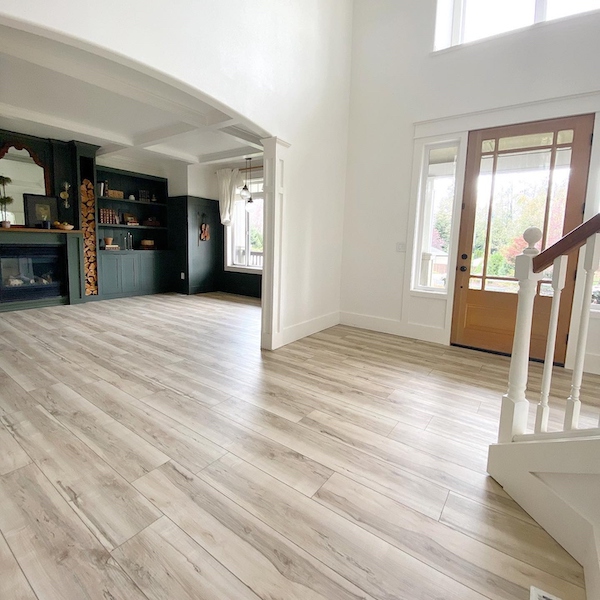
Vinyl tiles are individual tiles that when connected, make a vinyl composition that seamlessly mimics ceramic or wood tiles. This type of vinyl flooring is a more luxurious option and easier to install and re-arrange. Vinyl tiles give you the freedom to make up your own designs as you glue them down, in the case of damage, they require less work to fix.
Having two options for types may seem limiting, but that doesn’t determine the style options for flooring. On the market, you will find an endless array of vinyl flooring, from stained-wood to stone and even ceramic look, ready to fit any room you wish to upgrade.
Tips and Tricks to Vinyl Floor Installment and Maintenance
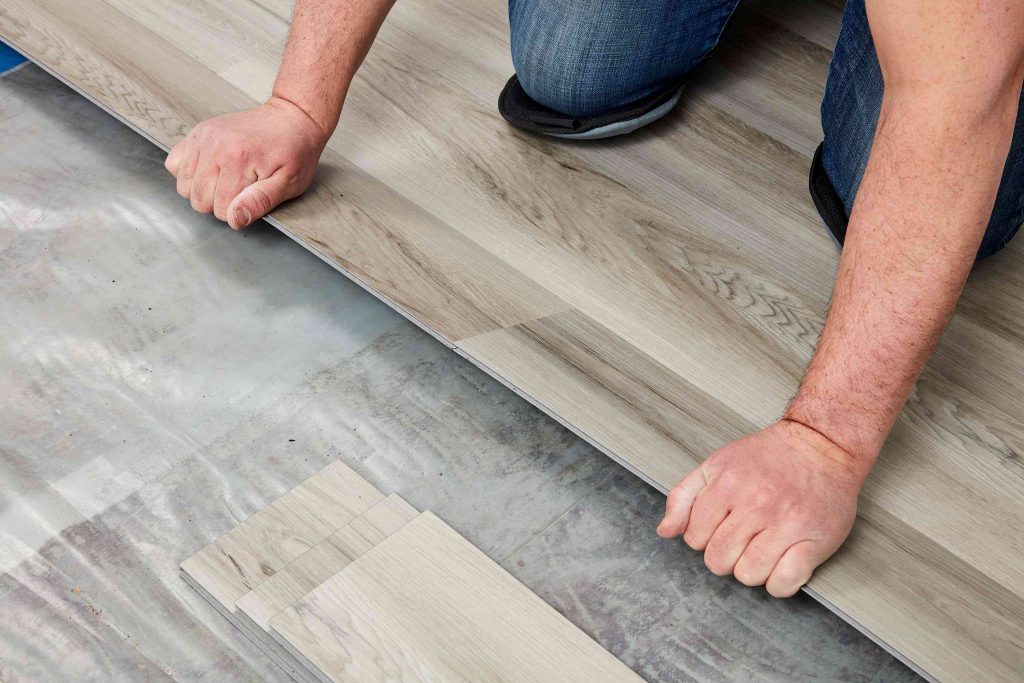
We’ve covered the basics of vinyl flooring, now let’s move to how to install and take care of it so you can get your money’s worth. Installing this flooring is a pretty easy job so you can either opt for a professional or get down to DIY business. Keep in mind that if you’re going the DIY route, it’s best to go with vinyl sheet flooring, as it’s easier to place on your own. So let’s go over some general tips for the installing process.
The first step after choosing your vinyl is making a sketch and accurately measuring the room’s dimensions. This way you can correctly cut your sheet, so you won’t encounter any issues during instalment. But keep in mind to add a few inches in each sizing, for easy adjusting and centring in the room.
The next and probably most critical step is removing any previous flooring and levelling it completely flat. Should you need, patch up some indents and hollows in the floor to provide a smooth surface for the vinyl.
After the subfloor dries out, cut out your vinyl, spread out the adhesive evenly and carefully place your flooring on the desired area. The only thing left is to let the vinyl settle into position and completely dry off. During this step, refrain from re-adjusting or adding pressure to the floor as it may disrupt the drying process.
As far as maintenance goes, vinyl floors are one the most low maintenance floors available. For daily cleaning, you can sweep off or vacuum the dust, and since they’re waterproof, easily go over with a mop and neutral detergent. If you follow these general cleaning guidelines you won’t need any additional maintenance, as the floors are already designed to withstand a lot of damage.
To Sum Up
If you’ve been considering a home improvement project, but aren’t sure what to do first, this might be your best investment. Not only will it last you for a really long time, but vinyl floors will tie your whole room together for a sophisticated yet affordable look. And on top of that, this type of flooring is completely eco-friendly, so not only does it look good but it’s good for the environment, too!



